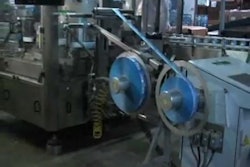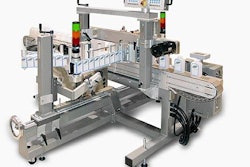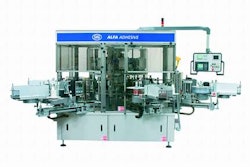
It’s not just the business media, either, where issues such as theft and the tracking of goods through supply chains are bound to be covered. The topic is also being discussed in media outlets aimed at the general public, where some are suggesting the ubiquitous bar code will soon be relegated to the technology scrap heap. The truly questionable word in that outlook is “soon.”
Within Packaging World, you’ve been able to read about how RFID chips can be used to track returnable totes in several operations, even how some companies that ship in ocean-going containers use them for security purposes. RFID has made its way to an abundant number of technology seminars over the last several months, and that shows little indication of abating. In fact, RFID will have a prominent position as part of the conference at Pack Expo Las Vegas.
There’s been a good deal of discussion about extending the use of chips into individual packages, with the use of on-shelf readers to help stores control shelf stocking. In fact, as reported in news (see packworld.com/go/c087), Wal-Mart Stores and Gillette had been considering a test of just such a retail application.
Additional research—coupled with complaints from noisy privacy groups—has shelved that idea for now. Meanwhile, Gillette may still be continuing a similar on-shelf test in England. It is precisely this extension of RFID use that seems to have created two diametrically opposed opinions.
The one heralded by the AutoID Center at MIT and its various members is that the use of RFID on individual packages is only a matter of time. How and why it will be used on individual packages is not totally clear. Some proponents, Gillette among them, seem to feel it can aid in keeping shelves stocked and, perhaps, in creating some package security.
But will retailers invest in both shelf scanners and some sort of triggering device at store doors that will detect when an item hasn’t been deactivated at the checkout counter? Maybe. After all, products like Gillette’s shavers carry a lot more technology than ever before, and thus a higher price. It appears that they’ve become targets for shoplifters, especially because the shavers now appear on the eBay auction Web site.
If these shavers, presumably stolen, have their packaging intact, it’s possible for Gillette to buy one to scan the active RFID tag. That way the company could find information to determine where in the supply chain that package had disappeared. In this scenario, Gillette’s investment in RFID might be valuable.
Then there’s the opposing opinion, one held by James Heurich, president of RFID, Inc., a supplier of RFID tags and readers for nearly 20 years. Heurich believes that, though some advanced RFID applications on unit packs are theoretically possible, he doesn’t see them as practical or technologically feasible ever.
“Now I recognize that you need people to think outside the box and professors who can push the envelope of technology, but I think this has reached the point of misrepresentation to the public,” he tells PW. “The fact that the AutoID Center says it’s possible to produce the tags for pennies that could broadcast at great distances is just not feasible.” Heurich also points out that the majority of the well-established RFID manufacturers are not members of the AutoID Center.
Of course, Heurich and some of his competitors do have an axe to grind. Many of the established RFID producers, he says, are struggling to counter all the coverage of the “nickel” tag. He says many major contracts have been delayed because the customers, although agreeing to the terms early on, began to question why the RFID devices cost so much more than the infamous “nickel” tag. “We’re in the process of re-educating them,” he says, “and I think the contracts will go through, once they understand reality.”
Reality—especially in the case of RFID—may be different for people and institutions with differing agendas.
See an archive of Arnie Orloski's Pipeline columns at www.packworld.com/pipeline.
Arnie can be reached at [email protected]























